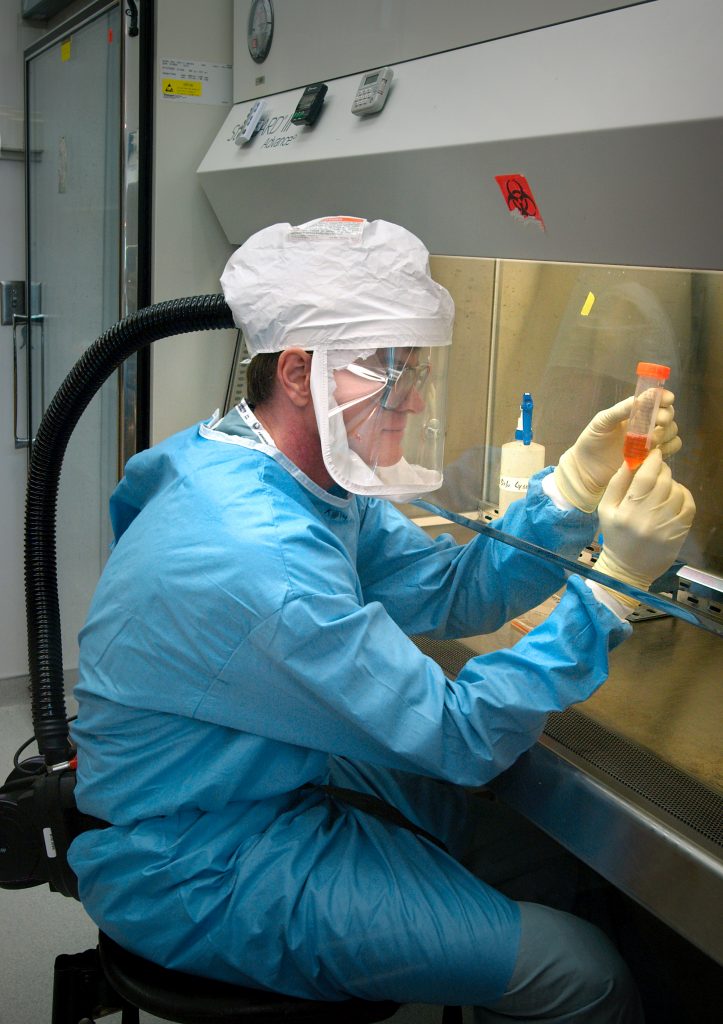Ebola virus (EBOV) glycoprotein (GP) can be recognized by neutralizing antibodies (NAbs) and is the main target for vaccine design. Here, we first investigate the contribution of the stalk and heptad repeat 1-C (HR1C) regions to GP metastability. Specific stalk and HR1C modifications in a mucin-deleted form (GPΔmuc) increase trimer yield, whereas alterations of HR1C exert a more complex effect on thermostability. Crystal structures are determined to validate two rationally designed GPΔmuc trimers in their unliganded state. We then display a modified GPΔmuc trimer on reengineered protein nanoparticles that encapsulate a layer of locking domains (LD) and a cluster of helper T-cell epitopes. In mice and rabbits, GP trimers and nanoparticles elicit cross-ebolavirus NAbs, as well as non-NAbs that enhance pseudovirus infection. Repertoire sequencing reveals quantitative profiles of vaccine-induced B-cell responses. This study demonstrates a promising vaccine strategy for filoviruses, such as EBOV, based on GP stabilization and nanoparticle display.
Introduction
Ebola virus (EBOV), a member of the Ebolavirus genus in the Filoviridae family1, can cause a severe human disease known as viral hemorrhagic fever2,3. EBOV was solely responsible for the largest filovirus outbreak in history in 2013–2016 that caused 11,325 deaths4. The EBOV outbreak in 2019 led to 2103 deaths5 and was declared an international emergency on July 17, 2019, by the World Health Organization (WHO). In recent years, significant progress has been made to counter this deadly virus. Neutralizing antibodies (NAbs) have provided effective therapeutics for EBOV infection6,7,8,9, as demonstrated by the ZMapp cocktail of murine chimeric antibodies10,11, as well as human antibodies12,13. Vaccines based on different delivery systems have been tested in humans14,15,16,17, of which rVSV-ZEBOV (Ervebo®)—a replication-competent recombinant vesicular stomatitis virus (VSV) expressing a Zaire EBOV glycoprotein (GP)18,19,20,21—was recently approved by the U.S. Food and Drug Administration (FDA) for human use. However, GP-specific antibody titers did not noticeably increase 7 days after rVSV-ZEBOV vaccination in humans15,22, in contrast to prior findings in nonhuman primates23. Additionally, a recent study reported the neurotropism of rVSV-ZEBOV that resulted in damage to the eye and brain in neonatal mice24. Antibody-dependent enhancement (ADE) of infection was also found for antibodies isolated from human survivors25, suggesting that weak or non-NAbs induced by a suboptimal vaccine may cause adverse effects. Currently, protein-based subunit vaccines are not available but may be needed to boost the NAb response in the rVSV-ZEBOV-vaccinated population, or as an alternative vaccine solution…







